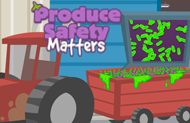Over the years we have produced hundreds of educational videos on a wide range of topics. These days we often produce short web videos as components of multimedia projects. In the past we often produced longer videos for classroom use and network broadcast.
Most of the videos below can be viewed online. Educational use is encouraged.
Infotoons - Food Safety
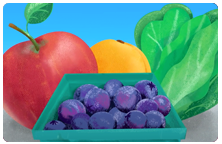
These videos offer a light-hearted explanation of the science behind food safety, with real life examples, to help foster a food safety culture among Maine producers and processors, especially those selling their products directly to consumers. They focus on regional foods important to Maine heritage, such as wild blueberries and seaweed.
- View the Infotoons - Food Safety videos
Reducing Antibiotic Resistance From Farm to Fork
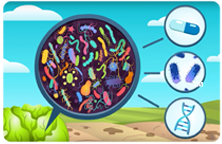
To maintain antibiotics' effectiveness in fighting dangerous bacterial infections for future generations, learn about how new technologies are helping us to better understand the management practices that can help to minimize potential risks of antibiotic resistance.
Zinkicide: Safe New Treatment for HLB
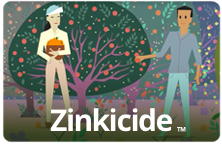
The citrus disease Huanglongbing (HLB), also known as citrus greening, has seriously compromised citrus production in many regions. Zinkicide is an economically feasible and environmentally sustainable bactericide treatment for HLB-affected citrus trees to improve production, fruit quality, and grower profitability.
- See how Zinkicide works
Innoventure Jr. ™

Even young children have skills and abilities that provide value to others and may eventually lead them to create their own jobs. This video series explores exchanging money for products and services, brainstorming with others to get the best ideas out there, and setting goals for entrepreneurship.
- View Innoventure Jr. ™
Chemistry Animations
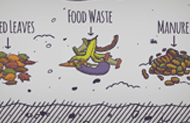
Plants and animals are mostly composed of carbon, hydrogen, oxygen, and nitrogen. These chemicals – and how they are put together – underlie everything around us. That's why chemistry is such a valuable tool for agricultural, environmental and food scientists.
- View Everything Is Chemical
- View Cation Exchange
Fresh and Sometimes Dirty
Fresh produce can sometimes be dirty. It’s important to wash it, no matter where you get it. These short, humorous videos are aimed at consumers who shop at Farmers’ Markets and suitable for sharing on social media.
Kid Eats
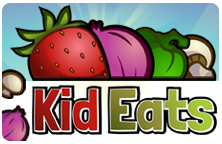
Learn how to prepare vegetables and cook safely with your child. Kid Eats provides educational videos, healthy recipes, and a fun virtual kitchen experience on the iPad, suitable for youth in grades 3-6. Seven healthy recipes and supplemental materials, including videos of each recipe. The iPad app is available free at the iTunes Store.
- View at Kid Eats website
- Watch Kitchen Knife Skills for Kids video
- Watch Kid Eats Recipe Sample Fruit Slushies video
Don't Be Gross
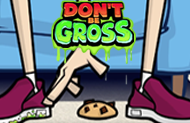
There is no 5-second rule. Designed for tweens to teens, these videos raise awareness about actions we take each day that are unsafe and about positive steps we can take to prevent illness.
- View animations at Don't Be Gross
Understanding Western Soils
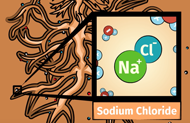
This series provides guidance on how to sample soil for analysis and includes visualizations related to soil properties and water infiltration.
- View videos at Understanding Western Soils
Norovirus Capsid
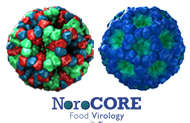
Human noroviruses cause 5 million cases of foodborne disease every year in the U.S. NoroCORE is a food safety initiative with the ultimate goal to reduce the burden of foodborne disease associated with viruses, particularly noroviruses.
Don't Wash Your Chicken!

If germs were visible to the naked eye, you would see that washing poultry just splashes bacteria that can make you sick all over you, your kitchen towels, your countertops, and any other food you have nearby, such as raw foods or salads. Learn how to prepare chicken recipes safely.
- View videos and animations for Don't Wash Your Chicken!
Produce Safety Matters ™
Growers, packing centers, and retailers rely on one another to prevent contamination and keep consumers safe. Four animations illustrate how contamination can spread from field to table and suggest ways to avoid this.
- View the animations for Produce Safety Matters
Sorption Animation
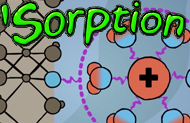
Learn about what happens when atoms, ions or molecules attach to the surface of a substance without entering it. This video discusses how adsorption occurs at the chemical level and clarifies the difference between adsorption and absorption.
- Watch Sorption in Everyday Life
- Watch Sorption: A Close-up View
Non-Thermal Food Processing Methods ™

Researchers have been studying non-thermal processing methods (methods that do not use heat) that will destroy pathogens and keep foods safe to eat, while retaining sensory attributes and nutrient content similar to raw or fresh products.
- View the animations for Non-Thermal Processing
Pathogens on Leafy Greens ™
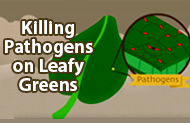
See new processing techniques for fresh produce that penetrate leafy structures to access microbes deep within. The aim of the Fresh Produce Safety Initiative is to develop and spread awareness about new processing techniques for fresh fruits and vegetables. Fresh and fresh-cut leafy vegetables, such as lettuce and spinach, have a leafy structure conducive to deep microbial penetration.
- View animations at Killing Pathogens on Leafy Greens
Tasty Solutions For Diabetes ™

Join our co-hosts as they show you how to prepare everything from breakfast parfaits to lettuce wraps to stuffed mushrooms and savory sopa de lima. Not only are these dishes delicious, they are also part of a group of recipes that can fit into your diabetes eating plan. You will also hear expert advice from a prominent physician and psychologist, and you'll get to know two people with diabetes who are successfully living their every day lives.
- View videos at Tasty Solutions for Diabetes
The BAC Files (English, Spanish, & Navajo)
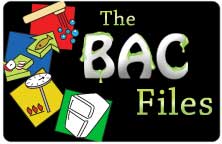
Designed for adults and older youth, this video uses an entertaining, informal style to teach viewers how to keep food safe to eat. Fighting BAC has never been so much fun! Available in English, Spanish, and Navajo. Approximate Running Time: 22 minutes.
- View videos at The BAC Files
The Story of BAC (English, Spanish, & Navajo)
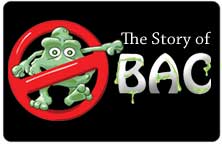
Tells the engaging story of several children who get tired of foodborne illness and decide to Fight BAC! Available in English, Spanish, and Navajo. Approximate Running Time: English-10 minutes, Spanish-9 minutes, Navajo-10 minutes.
- View videos at The Story of BAC
Chinese Food Safety (English, Mandarin, & Cantonese)
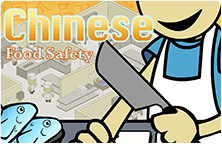
A successful Chinese restaurant owner teaches an apprentice that a reputation for safe food is the key to prosperity in the USA. He recommends keeping food surfaces clean, providing separate cutting surfaces for meats and vegetables, heating food to proper temperatures, and storing food safely. Available in English, Mandarin, and Cantonese. Approximate Running Time: English - 13 minutes, Mandarin -13 minutes, Cantonese - 12 minutes.
- View videos at Chinese Food Safety
It's Good Business: Processing Salsa Safely (English & Spanish)
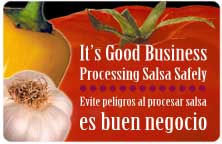
This video presents step-by-step instructions for processing chile salsa correctly in order to avoid foodborne illness or microbial contamination. Available in English and Spanish. Approximate Running Time: English-12 minutes, Spanish-16 minutes.
- View videos at It's Good Business Processing Salsa Safely
Processing Salsa Safely at Home
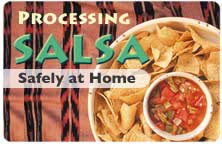
Everyone loves salsa. When you process your salsa correctly, you'll know it's safe. This video demonstrates how to process and preserve salsa safely at home using a United States Department of Agriculture-approved recipe. Approximate Running Time: 9 minutes.
- View videos at Processing Salsa Safely at Home
Making It Safe: HACCP for Small Food Processors (English & Spanish)
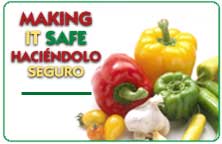
A Hazard Analysis Critical Control Points (HACCP) Food Safety Program designed for Small Food Processors in the Southwest. Available in English and Spanish. Approximate Running Time: English-17 minutes, Spanish-20 minutes.
- View videos at Making It Safe: HACCP for Small Food Processors
Preparing Safe Mexican Foods
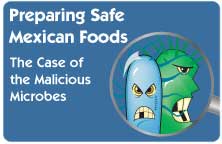
Preparing Safe Mexican Foods stresses the importance of having a monitoring program in your food establishment. It just makes good sense to protect your customers and your reputation by implementing a HACCP plan. This project was made possible by a grant from the USDA Food Safety Inspection Service. Available in English and Spanish. Approximate Running Time: English-12 minutes, Spanish-13 minutes.
- View videos at Preparing Safe Mexican Foods
La Vida de Matilde (Spanish)
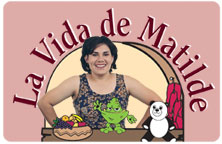
The video La Vida de Matilde ("The Life of Matilde") is presented in a soap opera style. It follows Matilde over a period of several weeks as she opens her own home childcare. She becomes more aware of food safety issues and learns how to combat BAC, the bacteria food may contain if it is not properly prepared or handled. Approximate Running Time: 34 minutes.
- View videos at La Vida de Matilde
Healthy Eating for a Healthy Baby (English & Spanish)

Before and during pregnancy, moms can give their babies a healthy start by eating right. Learn to use the Food Guide Pyramid to make healthy choices before and after giving birth. Find out the benefits of drinking plenty of water and eating lots of grains, fruits and vegetables. Young moms will learn that gaining weight during pregnancy is essential for their babies. Eating right can help ensure proper delivery, optimal weight gain and healthy, happy babies. English - 14 minutes, Spanish - 17 minutes.
- View videos at Healthy Eating for a Healthy Baby
Baby Talk: Listening to Your Baby at Mealtime (English & Spanish)

Even before they can say words clearly, babies communicate with "baby talk". Parents need to listen to their babies to find out when mealtime is over, when a second helping is in order, or when it's time to try new foods. Learn how to understand your baby's talk and help take the anxiety out of feeding time. English 15 - minutes, Spanish - 17 minutes.
- View videos at Baby Talk: Listening to Your Baby at Mealtime
Heat Up Your Life Series
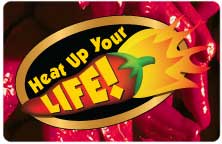
This video series takes you into the wonderful, wacky world of the hot and spicy. The package includes all three episodes: "Peppers and People", "From Seed to Salsa", and "Hot Plates!"
- View videos at Heat Up Your Life Series
Peppers and People
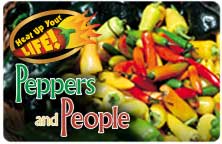
Episode one, "Peppers and People," explains the story of chile peppers throughout human history, from Columbus' introduction of chile in Europe to its arrival in the New World to its impact on contemporary life. You'll travel from the jungles of Guatemala to the streets of New Orleans to the country's only chile preserve. Approximate Running Time: 45 minutes.
- View videos at Peppers and People
From Seeds to Salsa
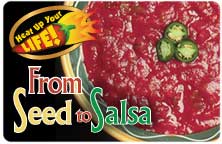
Episode 2, "From Seed to Salsa," tours farms, processing plants, import warehouses, factories and hot shops, and includes a side trip to the home of Tabasco sauce, Avery Island, Louisiana. Dave also provides a few home-growing tips from his garden in Albuquerque, NM. Approximate Running Time: 45 minutes.
- View videos at Seed to Salsa
Hot Plates
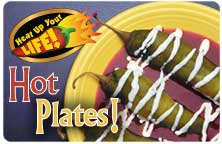
Episode 3, "Hot Plates," focuses on the culinary delights of hot and spicy food. From Miami to Los Angeles, from Jamaica to Mexico, the best in fiery foods are featured. Approximate Running Time: 45 minutes.
- View videos at Hot Plates
Ancient Roots, Modern Medicine Series

Ancient Roots, Modern Medicine is a three-part series that explores this amazing convergence of ancient healing arts with modern medical practices. These documentaries present fascinating insights into cultures around the globe that still practice ancient ways. The series also tracks intrepid scientists in their exploration for new cures based on ancient medicinal plants. For International and Domestic TV, Cable, Satellite, Educational, DVD / Home Video rights Distribution, please contact Tapestry International.
- View videos at Ancient Roots, Modern Medicine
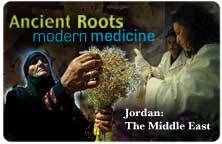
Travel to the unforgiving Badia Desert of Jordan where Bedouin nomads still battle diseases with age-old treatments. This is a world of black-robed healers, wise herbalists called attars and mysterious plants that survive in harsh, Middle East sands. Enter Dr. Sawsan Oran, whose research with the black iris, her country's national flower, is netting astonishing results. This showy bloom, used medicinally for centuries by the Bedouin, has delivered strong, anti-leukemic effects in early laboratory trials. Running Time: 28 minutes.
- View videos at Jordan: The Middle East
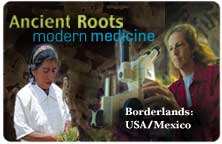
Venture to the USA / Mexico border, where people have been using medicinal plants for thousands of years and continue today. It is a land of cacti, intense sun, and curanderos - those who heal with desert roots and herbs. Now, American scientists are tapping into that precious knowledge - from an innovative program at New Mexico State University to clinical tests at a cutting-edge Seattle research lab - student researchers are discovering the power nature's wonders, and perhaps the next breakthrough medicine. Running Time: 28 minutes.
- View videos at Borderlands: USA / Mexico

Journey to the exotic Caribbean island of Curacao, where healer Dinah Veeris is on a one-woman crusade to preserve her homeland's threatened, medicinal plants. She is also saving the wisdom of a vanishing generation of healers whose practices are steeped in African and Native American lore. And see how scientists are unlocking the power of the island's botanical wealth - from the divi divi tree's amazing ability to fight staph infections to "mermaid's hair," a coastal blue-green algae with the promise of cancer cures. Running Time: 28 minutes.
- View videos at Curacao: The Caribbean
Birds of the Bosque
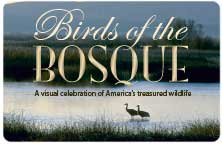
This video showcases the beautiful birds, mammals and scenery of New Mexico's Bosque del Apache refuge. Tens of thousands of birds migrate here every year. This tape focuses on the beauty of the Bosque and slow motion flight. Approximate Running Time: 14 minutes.
- View videos at Birds of the Bosque
Southwest Horizons Nature: Videotape Series
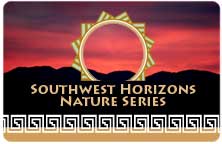
Explore the wonders of White Sands, the majestic Chiricahuas Mountains of the desert and experience the magic of winter bird sanctuary in this dramatic three-video series. These videos feature the people, wildlife, anthropology and geology of the American Southwest.
- View videos at Southwest Horizons Nature Series
White Sands: White Wilderness
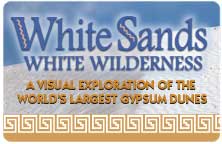
Visit the wondrous gypsum dune environment of New Mexico's White Sands National Monument, the largest of its type in the world. Through this dramatic video and colorful computer animation, this documentary details the geology, plants, wildlife and ancestral peoples found nowhere else. Approximate Running Time: 57 minutes.
- View videos at White Sands
Chiricahuas: Mountain Islands in the Desert

Explore the amazing animals, plants, geology and people of the "wonderland of the rocks", the Chiricahua Mountains on the New Mexico / Arizona border. Plant and animal species meet here in this spectacular biological crossroads of the Chihuahuan and Sonoran Deserts, the Rocky Mountains and Mexico's Sierra Madres. Approximate Running Time: 61 minutes.
- View videos at Chiricahuas
Bosque del Apache: Ancient Flyway of the Rio Grande
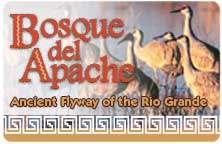
One of America's premier wildlife refuges. Every winter, this wetland in the desert becomes home to thousands of migratory birds that come to feed in the temperate New Mexico climate. this documentary features spectacular footage of the refuge's huge flocks and many other animals that life in this rich and diverse ecosystem. Approximate Running Time: 60 minutes.
- View videos at Bosque del Apache
Back to the Bosque
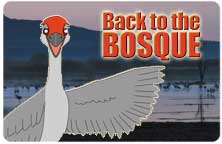
Experience a day in the life of a migrating bird with Sandy, the sandhill crane, one of the many birds who flock to the Bosque del Apache National Wildlife Refuge when the weather turns cold. Approximate Running Time: 17 minutes.
- View videos at Back to the Bosque
The Chihuahuan Desert: Our North American Outback
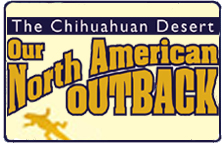
Intrepid host Kevin Von Finger guides you through the fascinating arid environment of the Chihuahuan Desert, our North American Outback. Visit ancient caves that reveal clues this desert is surprisingly young. See gigantic skeletons from animals that roamed the area in the last Ice Age - mammoths, giant sloths, and prehistoric camels. Learn about the phenomenal changes that this land has seen. Our North American Outback provides a unique journey to North America's largest desert. Running Time: 12 minutes.
- View videos at The Chihuahuan Desert: Our North American Outback
Soil: Who Needs It? (English & Spanish)

Join the three "Soilees" (Gritty, Sticky and Smoothy) as they try to gain respect for dirt. The animated characters explain the types, textures, and uses of soil, as well as causes and consequences of soil erosion. Soil conservation also is covered, including steps you can take at home to help stop erosion. Designed for elementary students, this video is fun for adults, too. Approximate Running Time: 14 minutes.
- View videos at Soil: Who Needs It?
Trees in Your Neighborhood (English & Spanish)
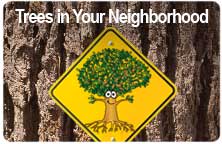
If you are good to trees, they will be good to you. We need trees for many reasons from fresh air and animal habitats to lumber and food supplies. Join forester Jim Freeman and students from a New Mexico elementary school as they demonstrate how to properly plant and care for trees. This video is designed for children but is fun for adults as well. Approximate Running Time: 10 minutes.
- View videos at Trees in Your Neighborhood
Green Gold: From the Maya to the Moon
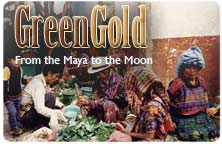
From locations across the globe, this award-winning video traces three treasures of the New World corn, potatoes and chile peppers and their phenomenal influence on human history. A story of exploration, discovery, life and death, it poses the perplexing question: can we survive if we lose forever the genetically diverse, wild and weedy ancestors of our valuable food crops? Running Time: English: 30 min.; Spanish: 30 min.
- View videos at Green Gold: From the Maya to the Moon
Survivors in the Sand
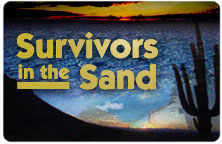
Developed for prime-time national television, this award-winning program takes you on location to the deserts of Australia, Israel and the American Southwest. Viewers will meet the desert dwellers and scientists who are inventing ways to flourish in the largest ecosystem in the world: arid lands. Approximate Running Time: 60 minutes.
- View videos at Survivors in the Sand
Evolution of the Rio Grande Valley: Implications for Global Change
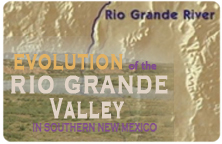
Rivers have always been sources of life and change in any land, but doubly so in parched, arid lands. A casual glance proves this truth. Even more important than how these lifelines make history, is how they record it.
Tour this landmark research for yourself and see why scientists all over the world look to the work done in the Rio Grande Valley to guide their explorations. Approximate Running Time: 30 minutes.
- View videos at Evolution of the Rio Grande Valley
Aggies Go Global at China Agricultural University

The mission of Aggies Go Global (AGG) is to provide students with international opportunities and experiences to stimulate their educational, professional, and interpersonal development.
- View the video Aggie Go Global at China Agricultural University
El Hermitaño (The Hermit)
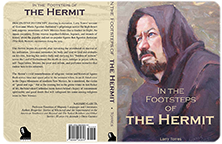
In his imaginative and captivating book and one-man play, Larry Torrez, Northern New Mexico’s renowned story-teller and actor, weaves folklore, legends, and strands of history to bring to life the “Holy Hermit,” Giovanni María Agostini-Justiniani.
- Visit the El Hermitaño web page


